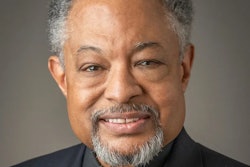HARTFORD Conn.
David Rowe says a special breed of mice he is developing at the University of Connecticut Health Center may one day help reveal new treatments for severe limb injuries, like the ones U.S. troops are returning with from Iraq.
Rowe, a professor of reconstructive medicine, has recently begun work on growing mice that won’t reject human embryonic stem cells. The goal is to put the cells into the mice and regrow fractured bones and damaged tissue.
“The hope is you can use these strategies … to potentially recreate the tissue that was traumatically lost,” he said. “The war injuries that our troops are sustaining … are causing unimaginable destruction of the limbs. In the past they succumbed to these injuries. Now they’re surviving them.”
Rowe is one of several Connecticut-based researchers who received the first grants from the state’s nine-year, $100 million stem cell research program in March. Six months into the projects, the scientists say labs and equipment are in place, staffs have been trained and the research is about to begin.
Stem cells are the body’s foundation cells and can be manipulated to grow into all types of human tissue and organs, according to the International Society for Stem Cell Research. Scientists say stem cells appear very promising in finding cures for cancer, Alzheimer’s, Parkinson’s, diabetes and other debilitating diseases.
Because the federal government does not fund research on new embryonic stem cell lines, several states have approved or are considering programs for such research. California’s $3 billion commitment is the largest in the country.
Rowe’s project was awarded $3.5 million by the state after its scientific merits were reviewed by a panel of experts from outside the state who look at all applications to Connecticut’s program.
Rowe said his focus is on turning embryonic stem cells into bone, cartilage, joints, skeletal muscle and skin. Besides repairing limb damage, the research has the potential to develop therapies for muscular dystrophy, osteoporosis and severe burns.
If the UConn researchers are successful in getting the human stem cells to regenerate bones in the mice and documenting exactly how to do it, they can apply to the U.S. Food and Drug Administration to test the procedure on humans. But Rowe said such an FDA request is several years away.
“What we’re all interested in … is how do you take stem cells and direct them to be useful in some kind of reparative strategy,” he said. “We’re going to grow them under a number of different conditions and see how far they progress toward the cells we want them to become.”
Rowe and fellow UConn scientists have been working on the concept for the past five years. They have already succeeded in getting mouse bones to grow back using adult stem cells from other mice. Now they’re going to see if they can get human stem cells to do the same thing.
Yale University received a $3.8 million grant from the state’s stem cell research program earlier this year to study how to turn human embryonic stem cells into nerve cells.
Michael Snyder, a biology professor at Yale and director of the university’s Center for Genomics and Proteomics, said nerve cell therapy has the potential for helping people with paralysis, Parkinson’s and Alzheimer’s.
“If we understand the basic steps to forming nerve cells, hopefully we can control it in cases where you need to fix them,” Snyder said. “It’s a really complex process. Nobody really knows all the steps that go on.”
Yale is trying to grow embryonic stem cells into human dopamine cells, which control motor function and disappear in people who develop Parkinson’s disease. The research does not involve animals.
Snyder said he and his colleagues recently moved into a new stem cell research center in Yale’s Amistad Building, and he expects to begin work on the embryonic cells soon.
The Connecticut Stem Cell Research Advisory Committee, which oversees the grant program, awarded $20 million in the first round of funding in March to 21 projects across the state and will dole out $10 million a year through 2015.
The first grants included $5 million for two centers that will acquire human embryonic stem cells, test them for quality and provide certified cells to researchers. The facilities are being run by Yale, UConn and Wesleyan University.
Researchers who have received funding from the state must turn in progress reports by next March.
Formal applications for the second batch of grants are due Nov. 1. The state has already received 87 preliminary requests from universities and small firms seeking nearly $45 million.
Research on embryonic stem cells has drawn strong opposition because human embryos, obtained from donors, must be destroyed to harvest the cells.
President Bush has vetoed two bills in the past two years that would have allowed federal funding of embryonic stem cell research, saying he could not support the deliberate destruction of human embryos. In 2001, Bush restricted federal funding of embryonic stem cell research to cells that already existed.
Researchers say human embryonic stem cell studies are still in an early stage. Work on the cells was made possible in 1998 when University of Wisconsin-Madison biologist Jamie Thompson first isolated the cells.
Dr. J. Robert Galvin, Connecticut’s public health commissioner and chairman of the Stem Cell Research Advisory Committee, said it’s too early to predict the success of the studies in the state. He said most of the first six months has involved getting the grant money and setting up labs.
“We’ll know much more next spring,” Galvin said. “There’s a lot of really good projects out there. There’s a lot of promising research.”
Snyder said it was only a few years ago that research began in earnest on embryonic stem cells.
“There’s so much to learn and so little we know,” he said.
On the Web:
Connecticut stem cell research program: http://www.dph.state.ct.us/StemCell/
National Institutes of Health: http://www.stemcells.nih.gov
–Associated Press
© Copyright 2005 by DiverseEducation.com





















